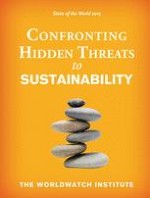2015 | OriginalPaper | Buchkapitel
6. The Oceans: Resilience at Risk
verfasst von : Katie Auth
Erschienen in: State of the World 2015
Verlag: Island Press/Center for Resource Economics
Aktivieren Sie unsere intelligente Suche, um passende Fachinhalte oder Patente zu finden.
Wählen Sie Textabschnitte aus um mit Künstlicher Intelligenz passenden Patente zu finden. powered by
Markieren Sie Textabschnitte, um KI-gestützt weitere passende Inhalte zu finden. powered by
